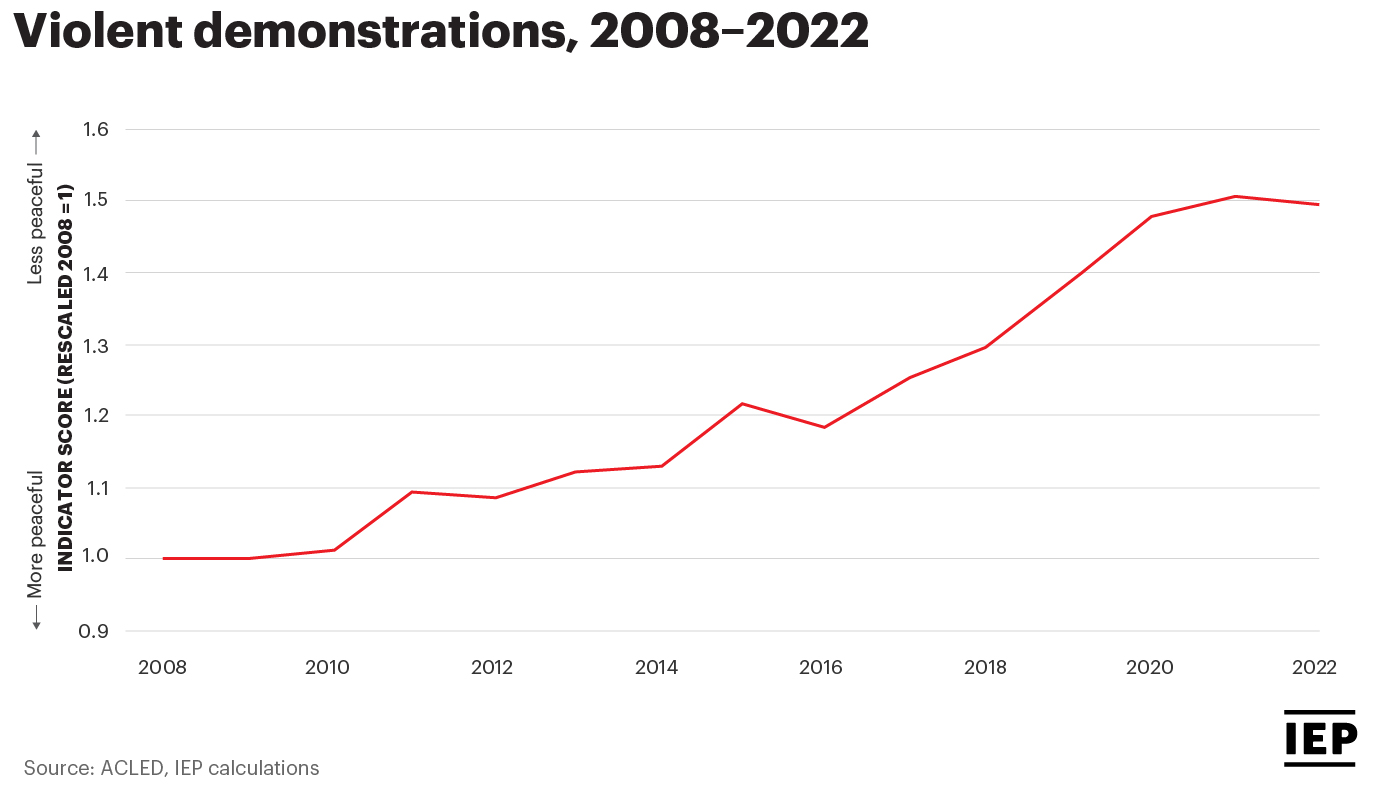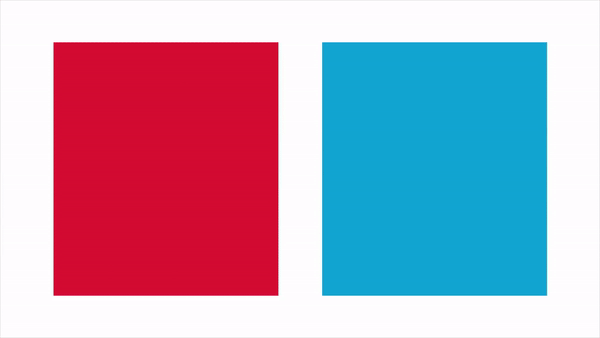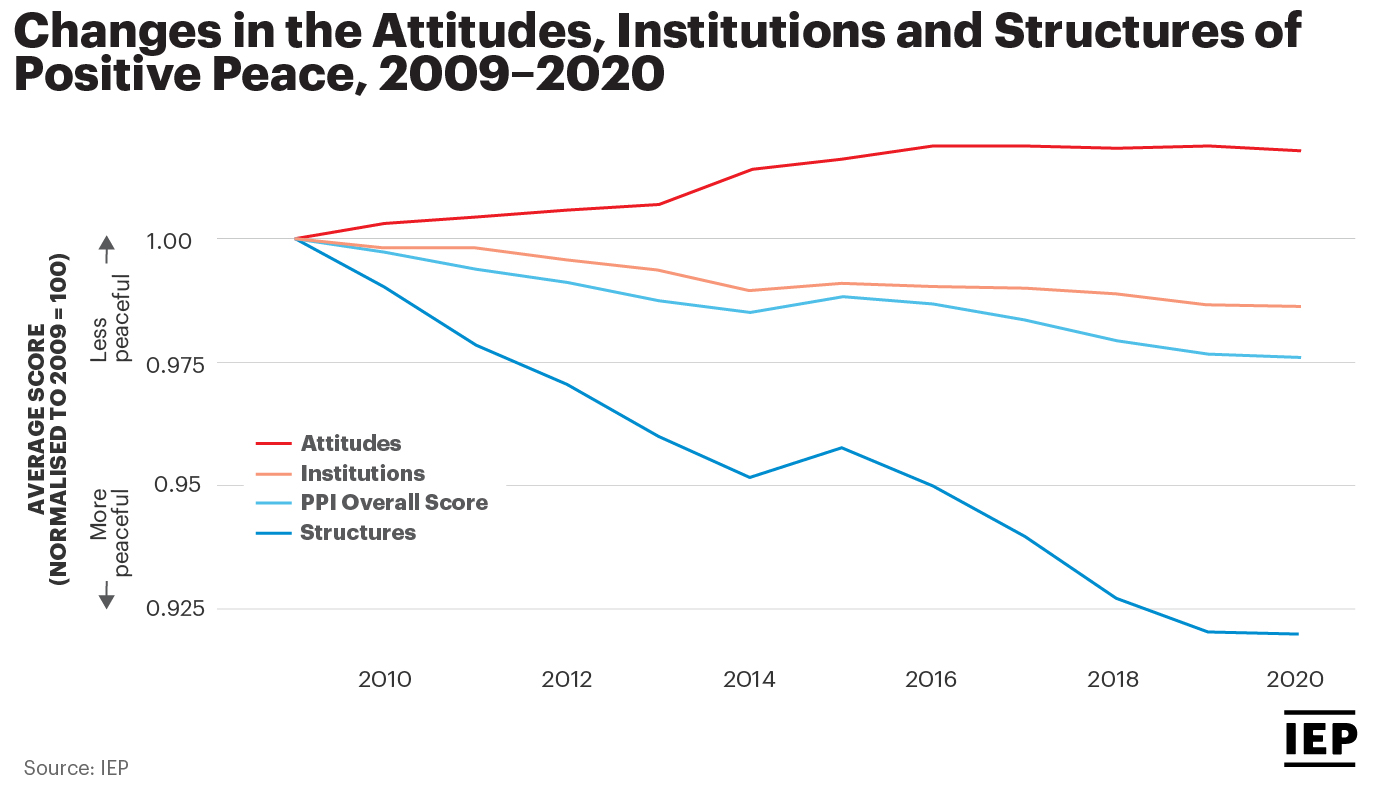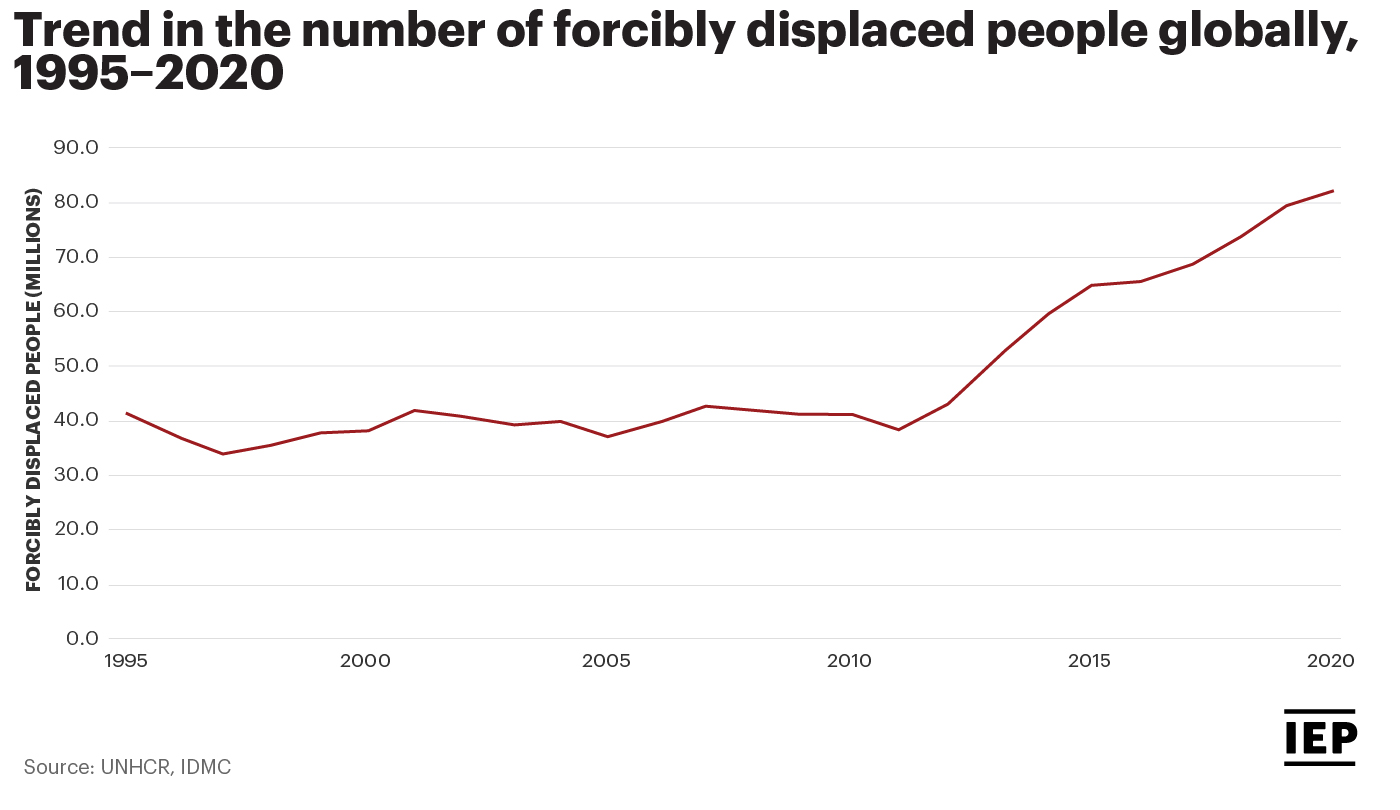On 21 September the United Nations Secretary General Antonio Guterres will ring the Peace Bell at the UN headquarters in New York to mark the 41st International Day of Peace. The theme of this year’s World Peace Day is ‘End racism. Build peace’.
The UN believes that achieving true peace requires more than merely laying down arms. “It requires the building of societies where all members feel that they can flourish. It involves creating a world in which people are treated equally, regardless of their race.”
As the world marks 41 years of this celebration, we revisit the profound impact recent years have had on global peace, as well as looking to the challenges ahead. Considering these issues alongside research conducted by the Institute for Economics and Peace (IEP) demonstrates the profound importance of this year’s World Peace Day theme.
The World Today
As the world continues its post-pandemic recovery, it is important to reflect on the past few years. We have seen world peace continue to decline, having fallen to its lowest level in 15 years. The ongoing conflict in Ukraine is indicative of global instability, with the latest research from IEP in collaboration with UNESCO revealing that 89% of all conflicts globally occur in countries with low intercultural dialogue. Intolerance and prejudice are key drivers of low intercultural dialogue and continue to present a barrier to peace, economic development and global stability.
At times the COVID-19 pandemic drew us apart. Communities were divided, and families and friends separated by national and international borders; as states, territories and nations increasingly looked after their own. The world retreated from multilateralism and incidents of discrimination rose. Anti-Asian discrimination in particular increased after the onset of the COVID-19 pandemic. There have been a number of violent attacks targeting Asian businesses and individuals, including the 2021 Atlanta Spa attacks that cost the lives of eight people in the US. This sentiment has not been limited to the US, with over 85% of Asian-Australians reporting at least one instance of discrimination since the start of the pandemic.
Research from IEP’s 2022 Global Peace Index highlights how in recent years, the frequency and severity of violent demonstrations has increased across almost all regions of the world. Much of this can be directly tied to racial injustice, divisive political discourses and widespread inequality. North America in particular experienced a sharp rise in the number of demonstrations. The murder of George Floyd, an unarmed African American man, by a police officer triggered a wave of protests and demonstrations that spread across the country. There was also a rise in the number of far-right demonstrations, such as those carried out by groups such as the Proud Boys in a series of counter-protests.

Like the UN, IEP understands that peace is a complex and at times fragile concept, and can involve far more than just the absence of violence. IEP believes Positive Peace is the framework through which we can identify, understand and address the myriad of complex challenges facing the world today.

The Pillars of Positive Peace are the eight key factors that underpin this framework.
Three of these pillars are particularly relevant to this year’s World Peace Day theme: Acceptance of the Rights of Others, Good Relations with Neighbours and Equitable Distribution of Resources.
Through the Acceptance of the Rights of Others pillar, discrimination and inequality is appropriately addressed. By guaranteeing human rights and protecting people’s freedoms, we are underpinning the shared values and social norms we need to strengthen if we are to achieve peace.
Good Relations with Neighbours encompasses both relations between ethnic, religious and cultural groups within a country, as well as external relations with other countries. Both of these relationships are vital for reinforcing peace and those countries with positive internal and external relations are more peaceful, politically stable and prosperous.
Equitable Distribution of Resources is important for ensuring that resources and opportunities are distributed equally between different social, ethnic, religious and cultural groups. This ensures that areas such as education, health outcomes and financial opportunities are similar for all individuals throughout a society which is far more likely to be the case in peaceful countries.
The utility of Positive Peace as a tool for understanding society is clear. IEP’s latest Positive Peace Report highlights how the rise in violent demonstrations that we have witnessed is consistent with a decline in one of the domains of Positive Peace, the Attitudes domain. This domain assesses how members of society view and relate to each other and has deteriorated almost every year, declining by 1.8% since 2009.

While the last couple of years have been difficult to navigate, and the Pillars of Positive Peace have at times been eroded, they are as important now as they have ever been. The Positive Peace Pillars, as well as being the foundations for understanding peace, can also be the means to address the challenge of achieving peace.
Looking to the Future
As we look forward, the critical environmental threats facing the world will have enormous ramifications. Research from IEP’s Ecological Threat Register suggests that up to 1.2 billion people could be displaced as a result of climate change by 2050. These issues will compound those the world is already struggling with, and forced displacement and mass migration will likely challenge social cohesion. If we are to navigate the social issues this may present, we must focus on strengthening intercultural relations. Building relations with our neighbours, accepting one another despite our differences, and ensuring the societies in which we live are fair and equal will all be vital in achieving this.

Despite the sharp rise in inequality, violence and the seemingly increasingly polarised political landscape, there is room for hope. Foreign aid expenditure hit an all time high during the pandemic, as countries rushed to support their neighbours. Many businesses operationalised their global logistics networks to support efforts against Covid-19 and deliver medical supplies; while fashion brands repurposed factories to produce masks, gowns and protective equipment.
The world is reopening, people are as connected as they ever have been and communities are rebuilding. We have seen the power of social movements that have the potential to be truly global, uniting people from communities all over the world. This power can be harnessed and we can connect and learn from each other all over the world.
Addressing the unprecedented challenges of the next few years will require a collective effort by the international community and this will only be possible against a backdrop of peace. If the message of this year’s World Peace Day is heeded and there is a collective effort made to fight racism, discrimination and inequality, then we might construct a more peaceful, resilient and equitable world, one capable of facing the myriad challenges that lie ahead.
[1] International Day of Peace | United Nations
[2] COVID-19 spending helped to lift foreign aid to an all-time high in 2020 but more effort needed – OECD
[3] Over 1800 businesses step up to provide essential medical supplies | NSW Government
[4] Million-Dollar Donations, Hundreds of Thousands of Face Masks, and Repurposed Perfume Factories: The Fashion World Responds to COVID-19 | Vanity Fair